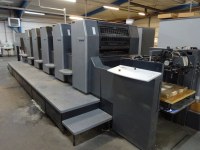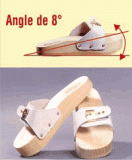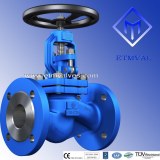Your skin starts to appear aged or has marks from severe acne, consider fractional CO2 laser treatment. This treatment boosts the production of collagen and is minimally invasive, letting you get your treatment done quickly so you can get back to your life. CO2 fractional laser machine is a type of skin-resurfacing tool. They use a carbon dioxide laser to help treat different skin issues, including acne scarring and aging skin. When the fractional CO2 laser skin resurfacing is used, it creates minor wounds across the skin forcing the body to heal the damaged cells, thus boosting collagen production. The fractional CO2 laser machine for skin can help treat issues like sun damage, fine lines, and wrinkles.
During the fractional CO2 laser procedure, high-energy light at a wavelength of 10,600 nanometers is absorbed by water in the skin tissue. This energy creates microscopic holes or “microchannels” in a grid-like pattern, leaving the surrounding tissue intact. These holes trigger the body's natural healing response, stimulating the production of new collagen and elastin. When the treatment is over, damaged skin will peel away, and new, healthy skin will replace it.
How to prepare
Your dermatologist will give you instructions to prepare for CO2 fractional laser treatment. Depending on your medical history, pre-care typically involves:
*Avoiding tanning or heavy sun exposure for 4 weeks before treatment.
*Not using medications that cause sun sensitivity, such as doxycycline, for 3 days before treatment.
*Taking an antiviral medication for a few days before and after treatment if you have a history of herpes or shingles.
*Quitting smoking for 2 weeks before and after treatment, since smoking can interfere with healing.
The procedure
Here's an idea of what to expect on the day of your CO2 fractional laser treatment:
1.This outpatient procedure generally takes between 30 minutes and 2 hours, depending on the issue being addressed and the area of skin receiving treatment.
2.CO2 laser resurfacing does involve some pain. The level of pain you experience will depend on the depth and extent of resurfacing, the skill of the dermatologist or surgeon, and your own pain tolerance.
3.Before the treatment begins, your skin will be thoroughly cleaned and you'll receive special eyewear to protect your eyes from the laser.
4.During the treatment, the dermatologist or surgeon will move the laser wand slowly over the area of skin being treated.
5.You may receive an ice pack to apply to the treated area for 15 minutes to prevent swelling.
6.Finally, an antibacterial ointment and nonstick dressing will be applied to the treated skin. Leave this on as instructed, usually for 24 hours.
You may need more than one treatment session, depending on the treatment required and intensity of the laser used.
Can the CO2 Fractional Laser Remove Acne Scars?
The fractional CO2 laser treatment is highly effective for addressing moderate to severe acne scars. The lasers work to penetrate the dermis breaking down scar tissue and increasing collagen. Over time, this helps to fill in pitting and reduce the appearance of dark marks. While it can be challenging to fully eliminate severe scarring in a single visit, results are seen after one session.
Does the CO2 Fractional Laser Hurt?
The fractional CO2 laser procedure may cause some pain, but steps are taken to reduce the likelihood of discomfort during the session. A topical anesthetic will be applied to the affected area. Immediately after the procedure, patients often describe the sensation as similar to severe sunburn, with tightness and heat in the treated area. This discomfort can usually be managed with over-the-counter pain relievers and frequent moisturizing.
What are the benefits?
CO2 laser resurfacing can treat numerous cosmetic and medical skin issues, from visible signs of aging and sun damage to scars and skin cancer.
1.Fine lines and wrinkles
CO2 laser resurfacing can lessen the appearance of fine lines and wrinkles. It may prove especially effective on:
*Crow's feet, or lines and wrinkles under and around the eyes.
*Lines and wrinkles on the forehead.
*Laugh lines, or those appearing around the mouth.
Not only can it reduce the appearance of wrinkles right away, it also encourages collagen production, which can improve the health of your skin over time.
2.Sun-damaged skin
Exposure to UV light may contribute to visible signs of skin aging, such as:
*Wrinkles.
*Sagging due to decreased elasticity.
*Rough and uneven skin texture.
*Liver spots and sunspots.
*Spider veins.
CO2 laser resurfacing can significantly reduce the appearance of all of the above.
3.Baggy eyes
*Loose skin above the upper and lower eyelids can cause what's commonly known as “baggy” or “hooded eyes.”
CO2 lasers can help tighten skin, and they may also help improve eyelid skin laxity and minimize the appearance of baggy eyes.
4.Acne scars
*CO2 laser treatment helps reduce the appearance of acne scarring by stimulating collagen production that helps tighten and smooth out the scars.
That said, it may not work on all types of acne scars.
5.Warts
*Dermatologists usually recommend other treatment methods, like over-the-counter remedies or freezing, for warts. But they may use lasers on warts that don't respond to other treatments.
6.Sebaceous hyperplasia
*Sebaceous hyperplasia occurs when sebum gets trapped in an oil gland. When this happens, the gland becomes enlarged and causes a small, waxy bump on the skin, usually on the face. While harmless, some people have them removed for cosmetic reasons.
*CO2 lasers can effectively remove these bumps and prevent them from growing back, though some research suggests that an erbium laser may be a better option. A 2020 review found that treatment with an erbium laser often only requires one session and involves fewer side effects than CO2 and other lasers.
7.Skin cancer
CO2 lasers can help prevent or treat skin cancers by shrinking and destroying tissue with little bleeding or damage to the surrounding tissue. A dermatologist might use CO2 lasers on pre-cancerous actinic keratoses or, in some cases, to treat certain types of early stage skin cancer.
What's the recovery like?
It typically takes 1-2 weeks to recover from CO2 laser resurfacing. Following your dermatologist or surgeon's aftercare instructions will help with healing and lower your risk of complications.
Here's what to expect during the recovery process:
*Your skin will feel raw for the first few days and may feel like a sunburn with itching, stinging, and peeling.
*Your skin may blister, ooze a yellow liquid, and crust over.
*After about 5-7 days, your skin will become dry and start to peel. The skin beneath may have a pink or pale appearance that will gradually take on your skin color. This process can take up to a year.
These tips can help you during the healing process:
*Avoid rubbing, scratching, or picking at your skin.
*Cleanse the treated skin as instructed by your doctor, usually 2-5 times a day with saline or a vinegar solution.
*Apply a thin layer of moisturizer or antibacterial ointment twice a day, as recommended by your doctor.
*Apply an ice pack wrapped in a clean, soft towel to the area as needed during the first 24-48 hours.
*Sleep with your head elevated to help with swelling.
*Once your skin heals, wear clothing that covers the area or apply sunscreen formulated for sensitive skin every time you go outdoors.
Ubicación : HENAN NEW-TECH MARKET.NO 199, YANG JIN ROAD, JINSHUI DISTRICT ZHENGZHOU, CHINA., 450003 Zhengzhou,
Persona a contactar : Best Bvlaser, 0086 19503862093








